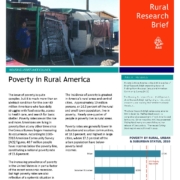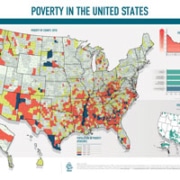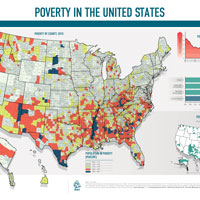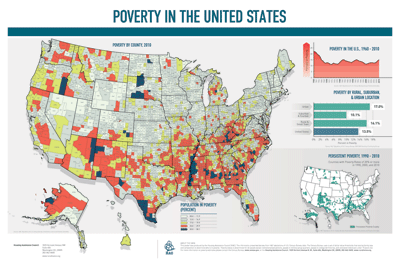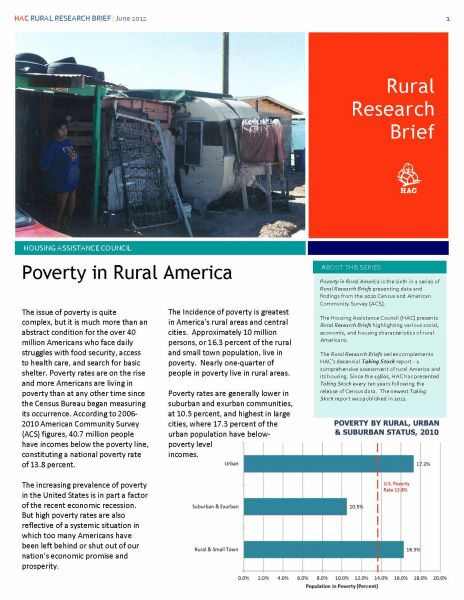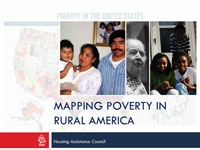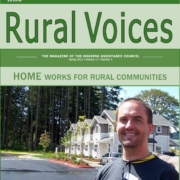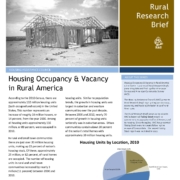HAC News: June 27, 2012
HAC News Formats. pdf
June 27, 2012
Vol. 41, No. 13
• House considering FY13 HUD funding bill • House committee approves USDA funding bill • Administration rejects House funding bills, including Rental Assistance level • House may consider grandfathering rural housing eligibility, Senate supports it again • Proposed guidelines would help make temporary emergency housing units accessible • HUD updates guidance on consulting tribes regarding historical properties • General housing outlook positive but cost burdens rising, Joint Center reports • Materials available on changing manufactured home titling policy • HUD offers many email lists • HAC releases “Poverty in the United States” map • Follow rural housing issues and HAC on social media
June 27, 2012
Vol. 41, No. 13
HOUSE CONSIDERING FY13 HUD FUNDING BILL. At press time, the House was still debating the 2013 T-HUD spending bill (H.R. 5972). Passage is expected this week. The bill passed the House Appropriations Committee June 19 without changes to the numbers reported in the HAC News, 6/13/12. The committee and the full House both rejected amendments that would have cut HOME funding by $200 million, and the House also rejected cuts to CDBG. The committee’s report (H.Rept. 112-541) included strong language supporting SHOP. Watch for an update on the results of the House vote on HAC’s website.
HOUSE COMMITTEE APPROVES USDA FUNDING BILL. On June 19 the full House Appropriations Committee approved H.R. 5973, the FY13 USDA bill passed by the Agriculture Appropriations Subcommittee (see HAC News, 6/13/12), with only one change in rural housing funding levels. The committee adopted an amendment offered by Rep. Mike Simpson (R-ID) adding $1.5 million to the subcommittee’s $886.6 million for Section 521 Rental Assistance. Like its Senate counterpart, the House committee’s report (H.Rept. 112-542) admonished the Administration for inconsistent rental housing policies. The full House is not expected to take up the bill until at least the week of July 9. Correction: The table in the printed HAC News of 6/13/12 incorrectly stated the House subcommittee’s Rental Assistance level as $866.6 million; it should have said $886.6 million. HAC apologizes for any confusion.
ADMINISTRATION REJECTS HOUSE FUNDING BILLS, INCLUDING RENTAL ASSISTANCE LEVEL. In separate Statements of Administration Policy issued June 21, OMB criticizes the funding reductions in the House bills for USDA and T-HUD. It notes that the House’s $888.1 million for Rental Assistance would eliminate 4,600 units of RA.
HOUSE MAY CONSIDER GRANDFATHERING RURAL HOUSING ELIGIBILITY, SENATE SUPPORTS IT AGAIN. When the USDA appropriations bill is considered on the House floor, Rep. Jeff Fortenberry (R-NE) is expected to offer an amendment that would extend eligibility for places that have gained population and would no longer fit the definition of “rural” for USDA housing programs, but are still under 35,000 population. Fortenberry’s provision would apply in FY13 only. The Senate’s USDA appropriations bill, S. 2375, includes a similar provision (see HAC News, 5/2/12). The Senate also approved an amendment sponsored by Sen. Ben Nelson (D-NE) to S. 3240, the Farm Bill, to apply grandfathering until 2020 Census data are available. The Farm Bill, which passed the Senate June 21, does not include other housing provisions.
PROPOSED GUIDELINES WOULD HELP MAKE TEMPORARY EMERGENCY HOUSING UNITS ACCESSIBLE. New guidelines for federal agencies would address accessibility for people with disabilities in newly constructed emergency transportable housing units. Comments are due August 17. Visit www.access-board.gov/eth/. Contact Marsha Mazz, Architectural and Transportation Barriers Compliance Board, 202-272-0020, mazz@access-board.gov.
HUD UPDATES GUIDANCE ON CONSULTING TRIBES REGARDING HISTORIC PROPERTIES. Consultation is required if a HUD-assisted project may affect historic properties of significance to federally recognized tribes. A Notice on Tribal Consultation, an updated Tribal Directory Assessment Tool, and other materials are posted on HUD’s site. Contact atec@hud.gov or a local HUD environmental officer.
GENERAL HOUSING OUTLOOK POSITIVE BUT COST BURDENS RISING, JOINT CENTER REPORTS. The State of the Nation’s Housing 2012 reviews signs of recovery in market rate for-sale and rental housing, and says serious cost burdens have increased for both owners and renters. The gap between the number of low-income renters and the supply of affordable, available, and adequate units continues to widen (Figure 30).
MATERIALS AVAILABLE ON CHANGING MANUFACTURED HOME TITLING POLICY. The Corporation for Enterprise Development offers a variety of items about the draft Uniform Manufactured Housing Act. If adopted by individual states, the act could change the process for converting a manufactured home to real property and, CFED says, could give manufactured home owners easier access to real estate mortgages.
HUD OFFERS MANY EMAIL LISTS. To subscribe to lists covering specific topics or geographic areas, visit https://portal.hud.gov/hudportal/HUD?src=/subscribe.
HAC RELEASES “POVERTY IN THE UNITED STATES” MAP. This popular map, illustrating poverty rates by county, is updated with Census data every 10 years. Printable versions in several sizes can be downloaded from HAC’s website. Order a 24″x36″ version for $5 online with a credit card or mail a check to HAC.
FOLLOW RURAL HOUSING ISSUES AND HAC ON SOCIAL MEDIA. Like HAC on Facebook, follow HAC on Twitter and LinkedIn, and read blog posts by HAC staff at Shelterforce’s blog Rooflines. HAC’s most recent blog post reports on seniors’ dire housing conditions in Yazoo City, MS.

